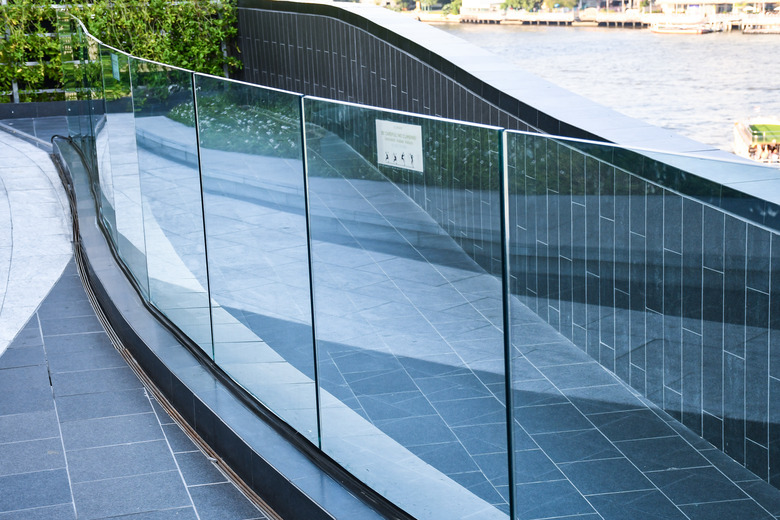Difference Between Plate And Tempered Glass
We may receive a commission on purchases made from links.
Before you can analyze the differences between plate glass and tempered glass, you must first understand what plate glass isn't. Most people use the term "plate glass" to refer to any large sheet of glass, but this is incorrect. The term "plate glass" refers to a specific glassmaking method that is now obsolete. What most people refer to as plate glass today is actually annealed glass.
Plate Glass Versus Annealed Glass
Plate Glass Versus Annealed Glass
In the past, plate glass was made using a large machine. Manufacturers poured molten glass onto large metal tables where it could spread out into a sheet. As the glass cooled, a machine ran rollers over the top of the glass to keep it smooth and even.
Today, glassmakers use a float method instead. Using this method, the sheet of glass floats on top of melted metal, often tin. In this floating bath, the molten metal makes the glass floating above it quite smooth. The glass is then placed into a temperature-controlled furnace where it is cooled very slowly — more slowly than it would cool at room temperature.
This slow cooling is the annealing process. Cooling glass slowly reduces its internal stress. This in turn makes the glass stronger than traditional plate glass.
Tempered Glass Manufacturing
Tempered Glass Manufacturing
Tempered glass starts its life as annealed glass. To make it, glass manufacturers heat annealed glass to a temperature of 700 degrees Celsius (1,292 degrees Fahrenheit). These temperatures are achieved in a three-part furnace. First, the glass rolls through the furnace on hot rollers that heat the glass as it passes over them.
At the same time, heat coils in the furnace generate radiant heat, keeping the overall furnace temperature at the desired level. While all of this is going on, precisely situated air jets make sure the heat gets applied evenly to the glass. When the glass is hot enough, the furnace quickly changes the temperature, simultaneously blasting both the top and bottom of the glass sheet with cold air. This process makes the glass an amazing four times stronger than untempered annealed glass.
Pros and Cons of Annealed Glass
Pros and Cons of Annealed Glass
Annealed glass is strong enough for use in a wide variety of applications and is often made into window panes, tabletops, and display cases. This glass can withstand temperature fluctuations, which is why it is often used in windows, and it can be cut or curved into various shapes and sizes. Acid etching is also possible to decorate annealed glass and make it more visually interesting.
Annealed glass is quite strong and versatile, but it's far from perfect. When annealed glass breaks, it shatters into sharp shards that can cause nasty cuts. Because of this, annealed glass isn't recommended for high-traffic areas. It also fails to meet code specifications that require some type of safety glass.
Pros and Cons of Tempered Glass
Pros and Cons of Tempered Glass
Tempered glass is more expensive than annealed glass, but it has many advantages over its annealed counterpart. Tempered glass is considered a safety glass and is difficult to break. When it does break, it dissolves into tiny glass pebbles that generally aren't sharp. Because of this, building codes often require the use of tempered glass for shower stall doors, refrigerator shelves, skylights, and patio doors as well as around swimming pools. Car windows and windshields are also made of tempered glass.
Unfortunately, you can't cut or drill into tempered glass. Once tempered glass cools, it is what it is, and you can't alter it. This means you'll need to plan ahead to get the precise specifications you want. Screw holes, for example, need to be placed in the glass before it's cooled. Although rare, it's also important to note that tempered glass can randomly shatter.
